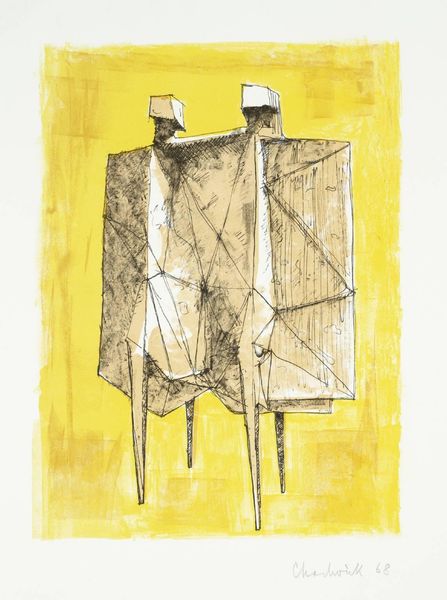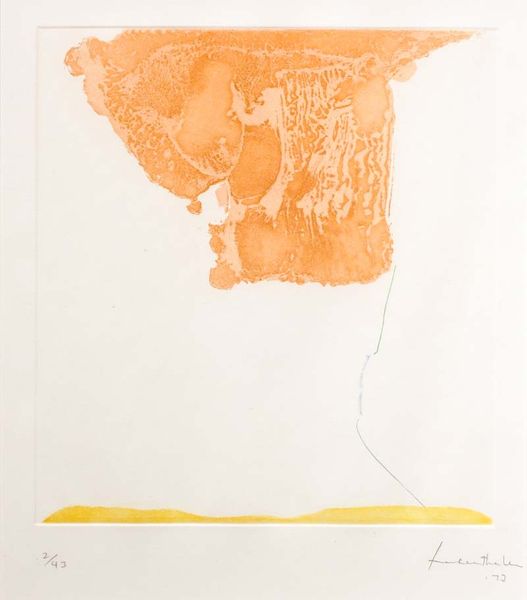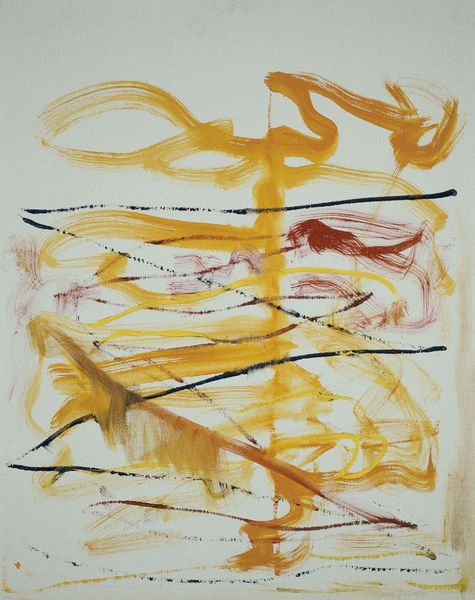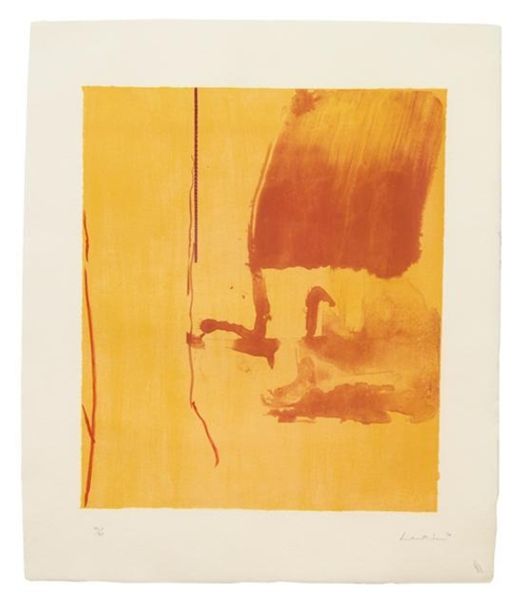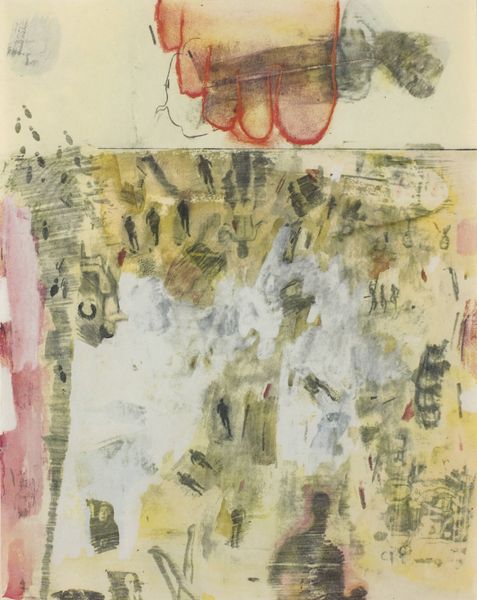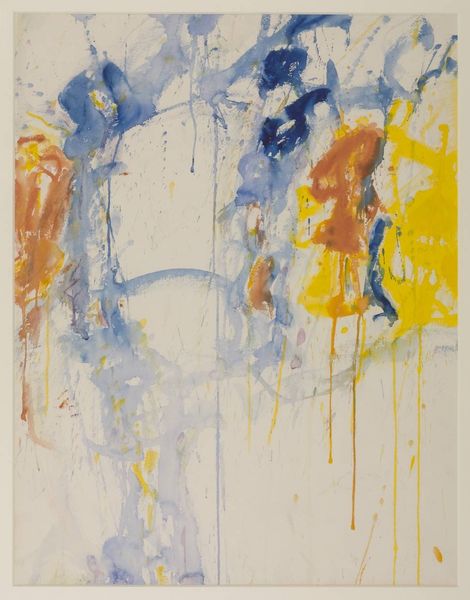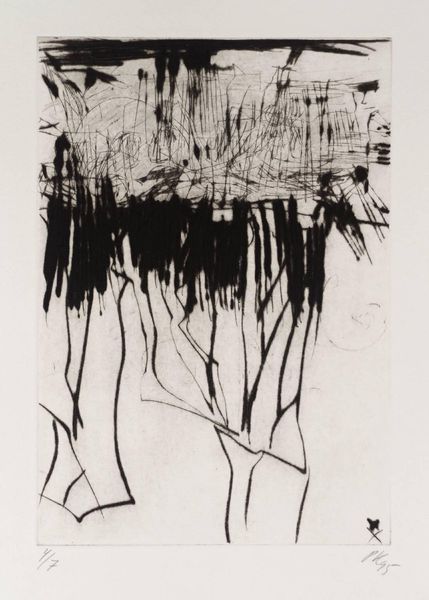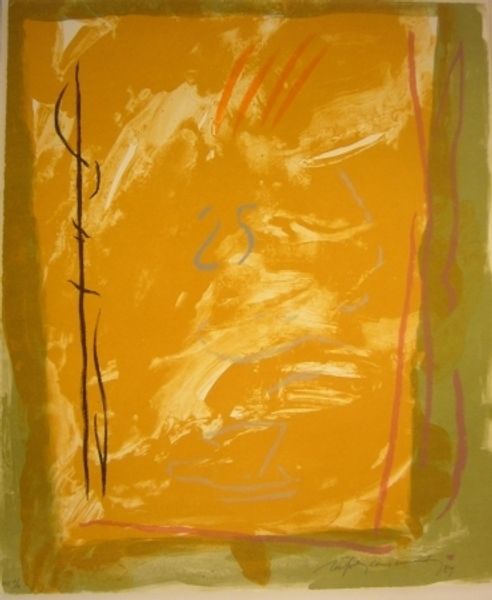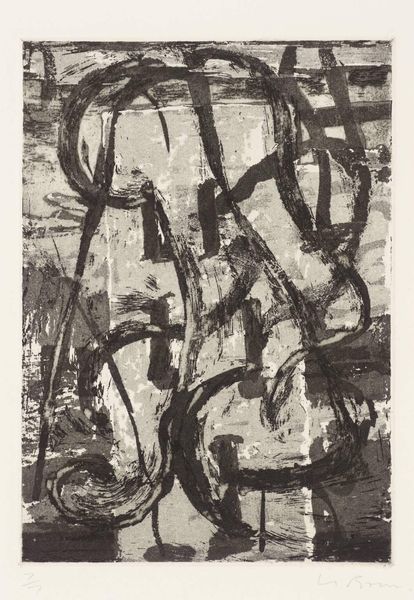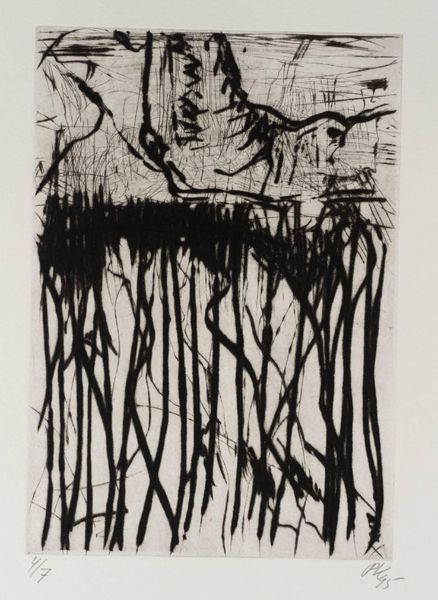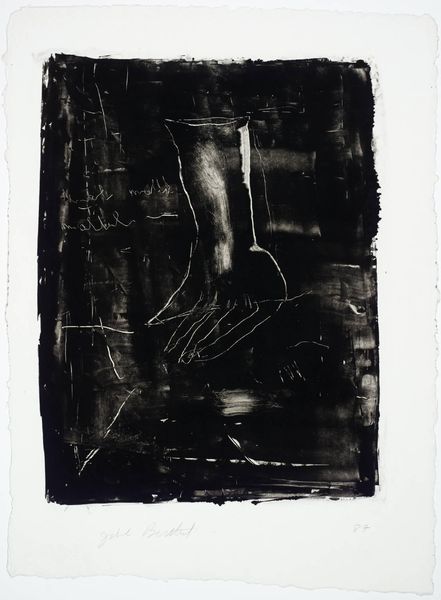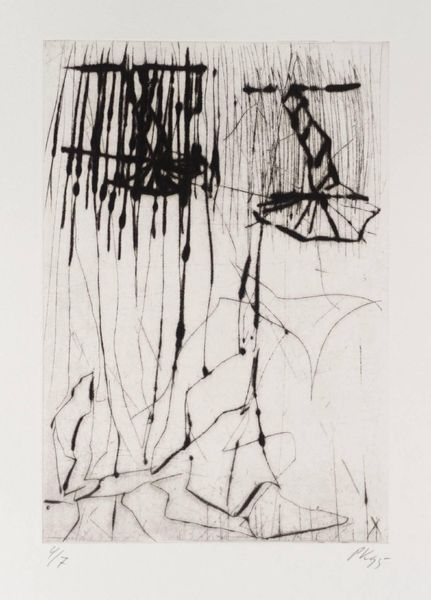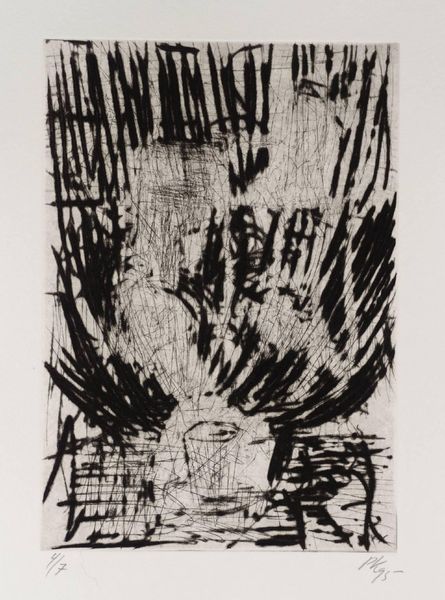
Copyright: Georg Baselitz,Fair Use
Editor: Georg Baselitz's "Mittags," created in 2004, is a linocut print, and it’s… striking. The inverted figure, the crude lines, the mustard yellow – it feels raw and deliberately unsettling. What's your take on this piece, considering its place in art history? Curator: Well, let’s consider the context. Baselitz emerged during a period of intense societal questioning in post-war Germany. His deliberate inversion of figures, which became his signature, can be seen as a challenge to established orders, a refusal to accept conventional perspectives, not just in art, but also in broader societal values. How do you think the German Expressionist movement that preceeded him impacted his style? Editor: I see a connection with their emotionally charged works! "Die Brücke" and "Der Blaue Reiter" certainly used bold colors and simplified forms to express inner turmoil, and you can feel some of that here, too, with the tension of the subject. Curator: Exactly. The act of inverting the figure, something that started much earlier in his career, isn't merely a stylistic quirk. It's a way to disrupt our reading, to force a fresh engagement. The political climate absolutely shaped the creation of the work. Can you infer that the figure in "Mittags" is devoid of symbolic and historical interpretation? Editor: It makes me question whether "Mittags" critiques a society where traditional values feel turned upside down. But is it also possible the inverting allows the viewers to consider form and structure anew without focusing on conveying social anxiety? Curator: Good question! Yes, absolutely. There’s the socio-political element but also a formal exploration happening here. Look at the bold lines, the stark contrast created by the linocut. He’s forcing us to reconsider the fundamentals of representation itself. It’s about challenging the viewer on multiple levels. Editor: This changes my perception of the work completely. Thank you for shedding light on these critical angles, thinking beyond my personal opinion has broadened my horizons. Curator: That's precisely why these dialogues are so important! Understanding the interplay of socio-political context, historical lineage, and artistic intention vastly enriches our experience with any artwork.
Comments
No comments
Be the first to comment and join the conversation on the ultimate creative platform.
